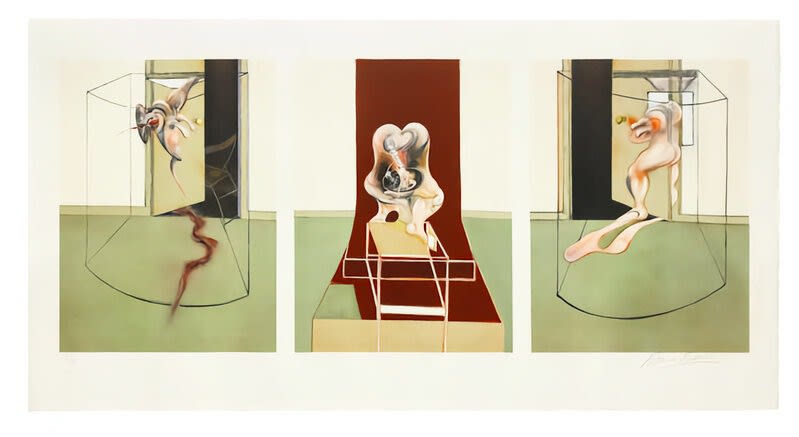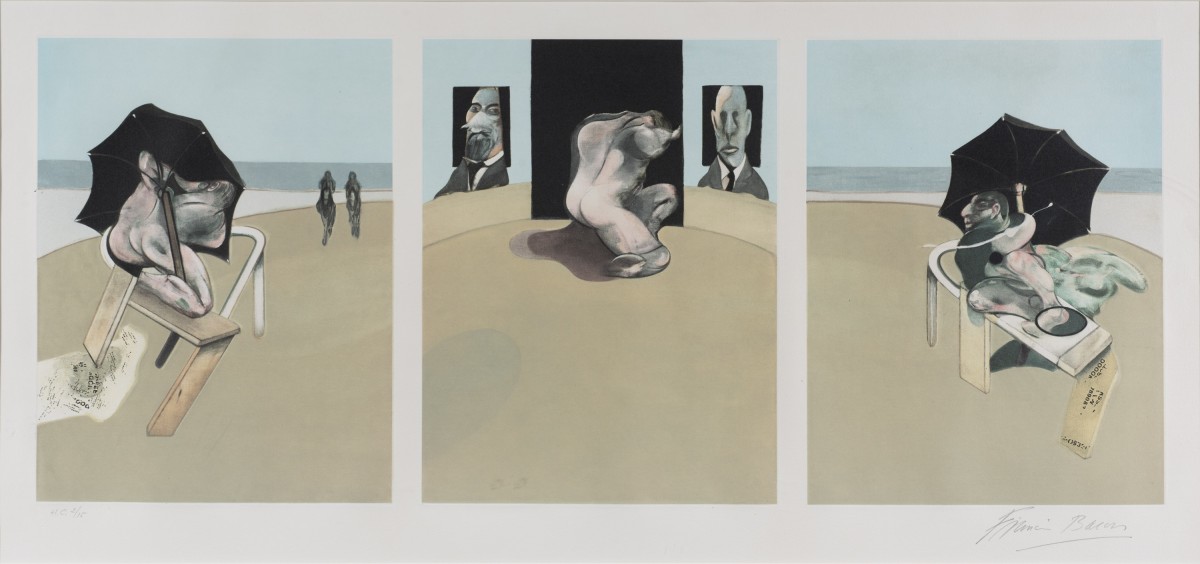
Who was Francis Bacon?
Francis Bacon (1909–1992) was a groundbreaking artist who defied the dominant trend of abstraction during his time, favouring instead a unique and unsettling form of realism. His tumultuous relationship with his parents, particularly his father, who had difficulty accepting his son's emerging homosexuality, contributed to a troubled childhood. As a result, Bacon rebelled, running away from school and spending the late 1920s and early 1930s in cities like London, Berlin, and Paris. During this period, he lived off allowances and odd jobs, while immersing himself in the bohemian lifestyle of London's Soho district. By the mid-1940s, Bacon began gaining critical acclaim, solidifying his reputation as one of the most significant painters of the 20th century.
How did Bacon become an artist?
Bacon’s path to becoming an artist was unconventional. He didn’t attend art school or undergo a traditional apprenticeship. Instead, he started his career in interior design but shifted to painting after being deeply moved by Picasso’s works at an exhibition in Paris in the late 1920s. Picasso’s depictions of the human body as distorted, bone-like structures opened Bacon’s eyes to the potential of painting, and Picasso became a major influence on his work.
Bacon’s pivotal moment came in 1945 with the exhibition of his triptych Three Studies for Figures at the Base of a Crucifixion. This piece, unveiled just as the horrors of World War II were becoming fully known, was seen as a raw and harrowing response to the war's brutality. According to Chris Stephens, Head of Displays at Tate Britain, it marked a turning point in British art, capturing the devastation of human suffering.

Bacon and Portraiture
By 1952, Bacon had fully engaged with portraiture, having first painted a head in isolation in 1948. His friendship with fellow artist Lucian Freud deepened this focus, with Freud sitting for Bacon’s first identifiable individual portrait in 1951. In many of his portraits, including Study for a Portrait (1952), Bacon used a cubic or architectural framing device, giving the impression that his subjects were trapped within transparent cages. When asked by critic David Sylvester about this recurring technique, Bacon explained that it served to "concentrate the image down."
Bacon also frequently employed the triptych format to prevent narrative or "story-telling" in his work. His Triptych (1967), inspired by T.S. Eliot’s Sweeney Agonistes, reflected themes of violence and the futility of life, which were central to Eliot’s poetry. Although it didn’t directly illustrate the poem, Bacon’s piece evoked the emotional intensity of reading it.
Francis Bacon Prints: What to Know
During his lifetime, Bacon collaborated with various print houses to create limited-edition prints of 36 of his iconic paintings. The quality of these prints varies, so potential buyers should be well-informed before making a purchase.
An auction in 2013 offered a complete set of Bacon’s prints, providing insight into their value. Notably, a portfolio of lithographs titled Miroir de la Tauromachie typically fetched high prices at auction. However, at this particular auction, a print of Study for a Bullfight no.1 with a unique dedication from Bacon (“For Brigitte”) sold for the same price as the entire portfolio. Special inscriptions, like this dedication, can significantly boost the value of a print.
The subject matter of a print also influences its worth. Bacon often painted friends and fellow artists, including Lucian Freud, which added a personal connection and increased their value. In 2013, Bacon’s Three Studies of Lucian Freud set an auction record, selling for $142 million. His prints of close acquaintances or self-portraits similarly command high prices.
Bacon in his own words:
“You know in my case all painting – and the older I get, the more it becomes so – is accident. So I foresee it in my mind, I foresee it, and yet I hardly ever carry it out as I foresee it. It transforms itself by the actual paint. I use very large brushes, and in the way I work I don’t in fact know very often what the paint will do, and it does many things which are very much better than I could make it do. Is that an accident? Perhaps one could say it’s not an accident, because it becomes a selective process which part of this accident one chooses to preserve. One is attempting, of course, to keep the vitality of the accident and yet preserve a continuity.”
“I use the frame to see the image – for no other reason. I know it’s been interpreted as being many other things… I cut down the scale of the canvas by drawing in these rectangles which concentrate the image down. Just to see it better.”
“I think that the very great artists were not trying to express themselves. They were trying to trap the fact, because after all, artists are obsessed by life and by certain things that obsess them that they want to record. And they’ve tried to find systems and construct the cages in which these things can be caught.”

What the critics say…
"[Bacon is] quite simply the most extraordinary, powerful and compelling of painters … His images short-circuit our appreciative processes. They arrive straight through the nervous system and hijack the soul."
Rachel Campbell-Johnston, Art Critic
"I think Bacon is on his own, really. I mean, he had a very, very dark view of the world… And that’s probably why I love Bacon paintings, because when I first saw them, they reminded me of sort of spaces I’d imagined in nightmares, which is why he’s great."
Damien Hirst, Artist
"His life was kind of pretty chaotic and he just did whatever he wanted to do, drank whatever he wanted to drink, slept with whoever he wanted to sleep with; he was a maverick within society… Francis Bacon’s paintings aren’t static, they’ve got total movement…"
Tracey Emin, Artist
"Nobody has found more wicked energy in contemplating the cage than Francis Bacon… Cages provide areas for Bacon to stage his ferocious meditations on human anguish and savagery, but they also assume more distorted forms, shifting like the spaces within a bad dream."
Charlie Fox, Writer
Discover Francis Bacon prints for sale and contact sales@andipa.com or call +44 (0)20 7589 2371 for further information.
